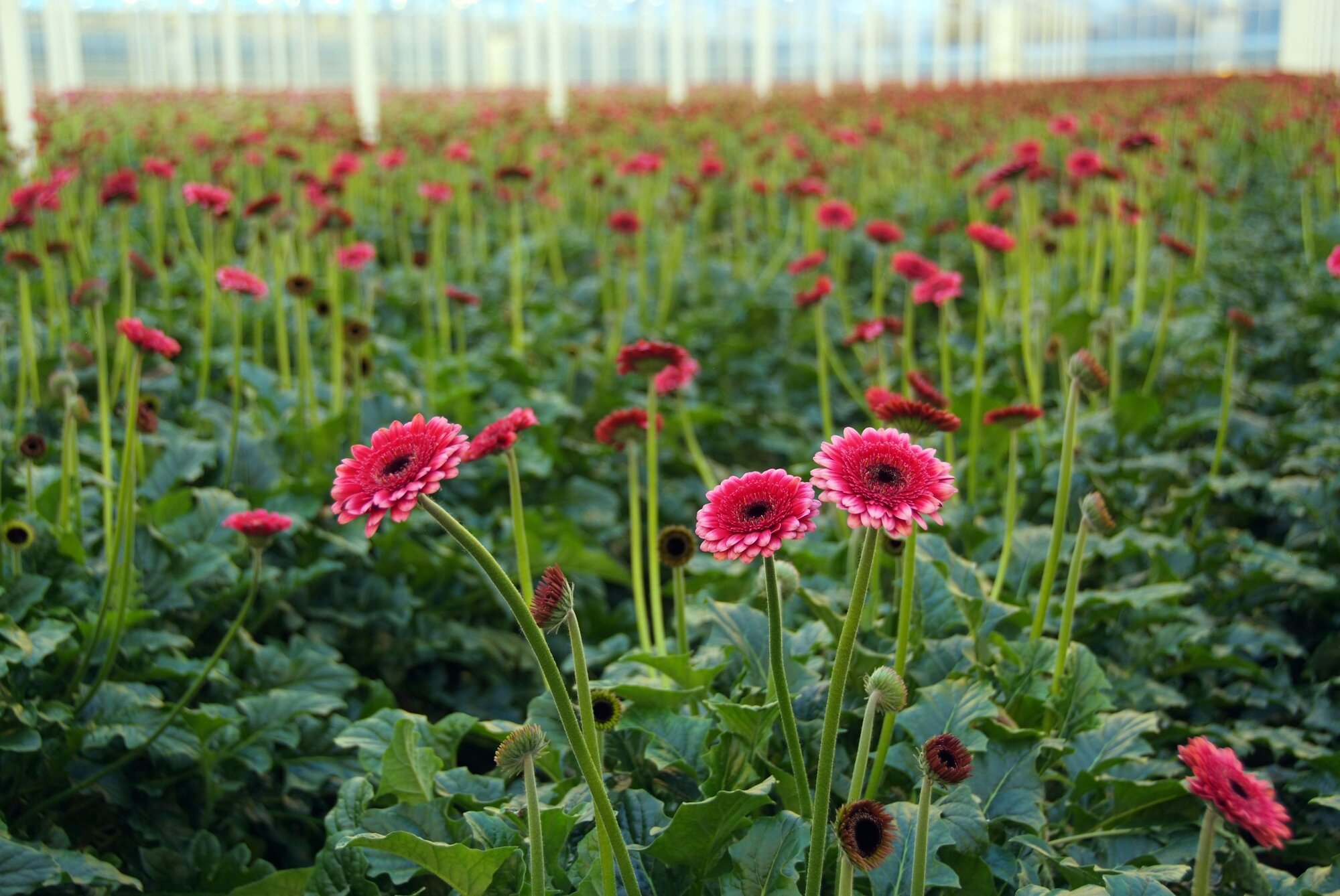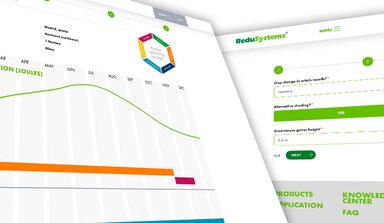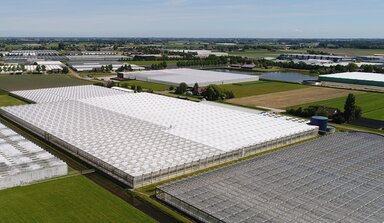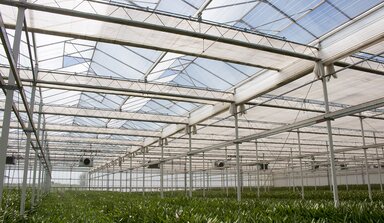Low-growing ornamental crops benefit from diffused light
Low-growing ornamental crops such as potted plants and gerbera perform better under diffused light. The micro-climate around the plants is more even, and the light penetrates better into the crop.
In the early years of using diffuse glass and coatings, growers thought that mainly tall-growing crops would benefit from better light penetration. This assumption was proven wrong. It makes no difference if the leaf area index (LAI, m2 of leaf per m2 surface area) is structured in layers of several metres or just a few dozen centimetres.
Thanks to a diffuse coating, the light penetrates deeper into the plants because it is scattered. It seems as if the light comes from all sides, rather than just from one side. This means that more leaves receive enough light for active growth.
Absorption of light
If light falls on a leaf, three things happen.
- Some light is reflected; this accounts for about 5-15%. This light is lost, or caught by another leaf.
- Most is absorbed by the leaf; this accounts for an average of three quarters of the light.
- A small amount of light shines through the leaf; this accounts for about 5-10%. This light can be used by lower leaves.
Absorption does not mean that all this light is actually used for photosynthesis. Many potted plants are originally shade plants and quickly receive too much. These plants have several ways to mitigate the excess of light: fluorescence, non-photosynthetic quenching, photo inhibition. Such processes are all designed to prevent harmful effects, either by diverting the light energy away, or by temporary suspension of the photo synthesis system. The defence against too much light energy is successful only to some extent. At high levels, damage is incurred due to formation of free radicals which break down everything around them, including cell membranes, enzymes and DNA. This shows up as discoloration or parts of the leaf dying. This is referred to as leaf burn.

Better light distribution
In order to prevent leaf burn, the grower may limit the quantity of light. Alternatively, the grower can also use a diffuse coating and improve the distribution of the light, preventing concentrated spots of excess solar energy. Such concentrated spots, the solar spots, is where the stress levels become excessive, raising the plant temperature.
Wageningen University & Research experiments proved that many crops are able to deal with a higher light level, provided that the light is evenly distributed. It also requires humidity levels to be maintained and temperatures that don’t go to high. Even distribution of light can be achieved by using ReduFuse.
ReduFuse IR also limits the greenhouse and plant temperatures from getting too high.
Micro-climate
Diffuse light provides a better micro-climate around and between the plants. Without diffuse coating, the crop is confronted with alternating bright solar spots and harsh shadows, both of which keep moving. These continuous changes raises the stress level to the plant and also unevenly distributes these stress levels. As a result, the crop now consists of plants with good performance and plants with high stress levels. As the crop itself helps create it’s own micro-climate (because of evaporation and emitting heat) it now causes an unbalanced micro-climate. In the greenhouse, horizontal and vertical differences occur in both temperature and humidity. This can lead to uneven growth and even to higher susceptibility to disease in certain spots.
From all experiments conducted by Wageningen University & Research in the past few years, the impression is that diffused light creates a more even climate in virtually all crops, improving crop performance. This alone leads to higher production and higher quality. Additionally, better light distribution enables increasing the general light level, which also enhances production.


